The Dancing Snow God That Brings Blizzards to Michigan’s Upper Peninsula
Heikki Lunta even has his own song.
On the northern edge of Michigan’s Upper Peninsula, along Lake Superior, the town of Hancock and the surrounding Keweenaw Peninsula usually see some serious snow—sometimes hundreds of inches a year. But in 1970, the snow didn’t come, sending the Range Snowmobile Club in Atlantic Mine, MI into a panic about their annual snowmobile race.
Enter David Riutta—a radio DJ in Hancock and one of the region’s many Finnish-Americans. Translating the name of his favorite country singer Hank Snow into Finnish, Riutta came up with a snow god named “Heikki Lunta,” the subject of his novelty song “Heikki Lunta’s Snow Dance.”
“Now I’ll sing my song to make the snow come down,” Riutta sings, as Heikki, in an exaggeratedly deep, booming voice. “And I’ll do my dance/Whoops, I almost lost my pants!” Despite the folksy humor, the song is slow and dirgelike, almost like an incantation. No wonder that, according to local legend, snow fell so voluminously after Riutta played his “Snow Dance” that the snowmobile race had to be canceled, leading him to write and record another song called “Heikki Lunta Go Away.” “If I don’t stop [dancing]/Look out–here comes a snowball filled with rocks!” sings Riutta in his thunderous Heikki voice.
Of course, not all legends are true. The 1970 snowmobile race, in fact, did continue as planned. But Heikki Lunta and his magical, snow-conjuring dance have become mainstays of Upper Peninsula legend. It’s said that when Riutta’s song is played, Heikki starts dancing, and then the snow comes down in droves. The Heikki Lunta legend has become so integrated into Upper Peninsula lore, it’s as if Heikki came over from the old country with the many Finns who migrated to Michigan in the 19th and 20th centuries.
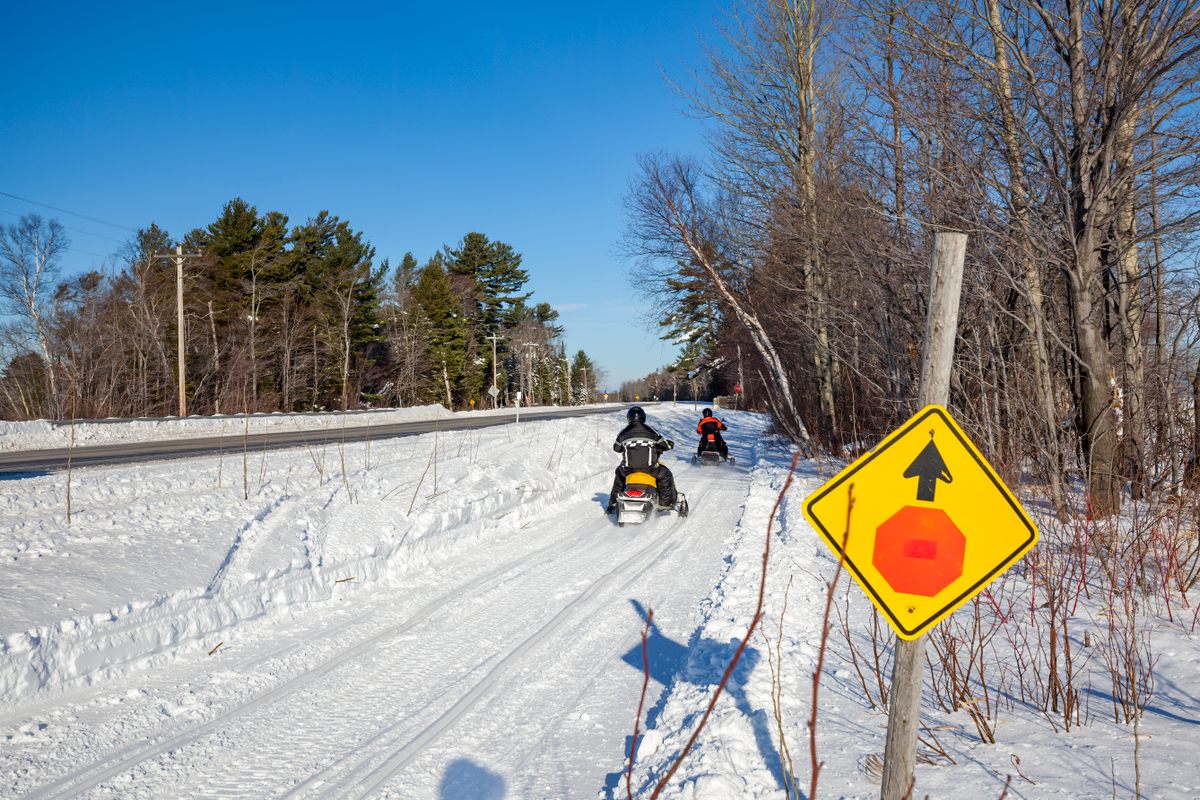
Riutta never gave a description of Heikki in either of his songs, and depictions of the character vary. The Heikki Lunta Festival’s logo in nearby Negaunee depicts him as a bearded and snow-goggled visage. In the 1994 music video for their song “Guess Who’s Coming,” the Finnish reggae band Conga Se Menne depicts Heikki as a faceless mass of fur coats. According to a history by local folklorist Hilary-Joy Virtanen, archived at the Center for the Study of Upper Midwestern Cultures (CSUMC), Riutta was once asked by a friend, to his chagrin, to dress up like Heikki in a similar fur coat for a Range Snowmobile Club event.
“People started to believe that if you played the [‘Snow Dance’] song three times in a row that it’ll snow,” says Jim Kurtti, Honorary Consul of Finland for the Upper Peninsula. “I know there was a woman who worked on the Mackinac Bridge, and she would request the song be played on the radio so that the bridge would close and she could take the day off.”
“There’s times during the year where the snow is just too much for me, usually around mid-March,” says Virtanen, an Upper Peninsula resident (or “Yooper”) herself, who works at Finlandia University in Hancock. “And that for me is where I would think: gosh, Heikki Lunta, go away.”
Early Finnish immigrants to the United States were often seen as representatives of a pagan, backwards, non-European culture, writes Virtanen in her archived Heikki Lunta research. Non-Finns interpreted Finnish traditions, like saunas, as ties to a pre-Christian world of magic and shamanism.
Virtanen sees the roots of the Heikki story in Finnish legends about witch doctors, known as noita. “A lot of stories came over with the immigrants about wizards in communities,” says Virtanen. “So there’s always been this idea that Finns had this ability to harness magic. David Riutta, when he was a kid, would’ve had a bit of access to this kind of information,” and perhaps felt empowered to invent an Upper Peninsula snow god whose song and dance routine could harness the winter elements.

Virtanen says that when she spoke with Riutta in the past, he said he faced some backlash from conservative Yoopers who saw Heikki as reinforcing stereotypes about Finnish Yoopers’ connection to a pagan past. These days, though, Virtanen says, “I’ve never really heard anything too bad about [Heikki].”
Following his appearances on Riutta’s radio program, Heikki became a muse for Upper Peninsula artists. In addition to Conga Se Menne’s “Guess Who’s Coming,” comedy-rock band Da Yoopers named a song for the snow god in 1991. A series of plays performed at Finlandia University between 1995 and 1997 further fleshed out the Heikki legend.
He’s now so culturally entrenched that the Upper Peninsula’s largest winter celebration is named for him. While Negaunee’s Heikki Lunta Festival uses Heikki as its logo, the festival has little to do with Finnish-American heritage and more with outdoor winter activities, like sledding, luge, and snowshoe tours.
Hancock’s Heikinpäivä festival, co-founded by Jim Kurtti in 1999, retains a Finnish-American flavor and celebrates the snow god as one of “three Heikkis.” The festival was founded as a celebration of St. Henrik, a Finnish patron saint whose name translates to Heikki in Finnish. With the increasing popularity of Heikki Lunta, it only made sense to include him in the celebration—along with a third Heikki, the “Hankookin Heikki” (“Heikki in Hancock”), a member of the local community who acts as something of a grand marshal for the celebration.
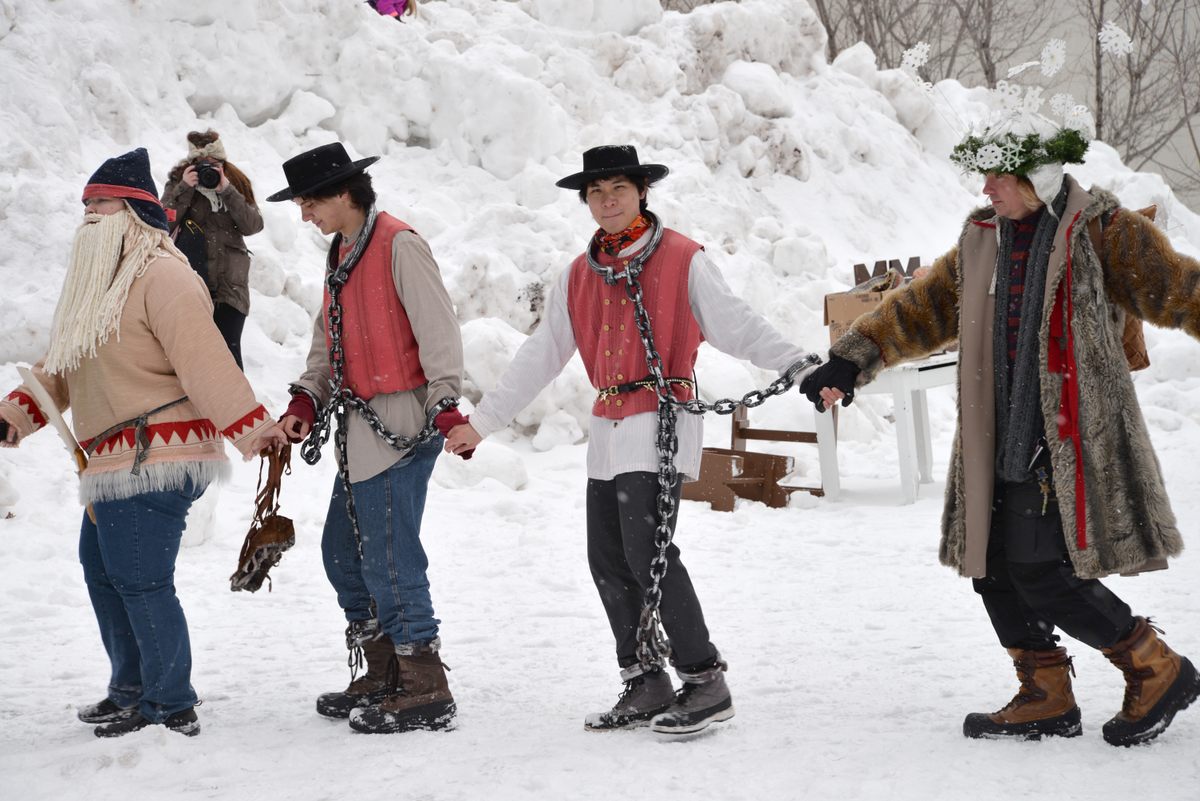
Unlike the Heikki Lunta festival, Heikinpäivä retains a Finnish-American character, featuring traditional foods and games, such as a wife-carrying competition, in which men race with their wives (or a female friend) slung over their backs. “We created a Finnish-American holiday intentionally,” says Kurtti. “We were not trying to duplicate something in Finland. And Heikki is a Finn-American folk character created in Hancock.”
When asked to design the Heikki Lunta costume for Heikinpäivä, Becky Weeks, then an art student at Finlandia University, had to get creative because of the god’s ever-shifting appearance. While Weeks took inspiration from Finnish mythology and legends, such as the national epic The Kalevala, for the design of the other costumes in the parade, Heikki’s design was a little closer to home.
“For his costume, I went for a sort of Yooper back woodsman—plaid shirt, wool pants,” says Weeks. “I understood him to be more of an American thing.”
While nobody can agree on what Heikki looks like, one thing’s for certain: when snow falls on the Upper Peninsula, Heikki’s somewhere out there, doing his dance.
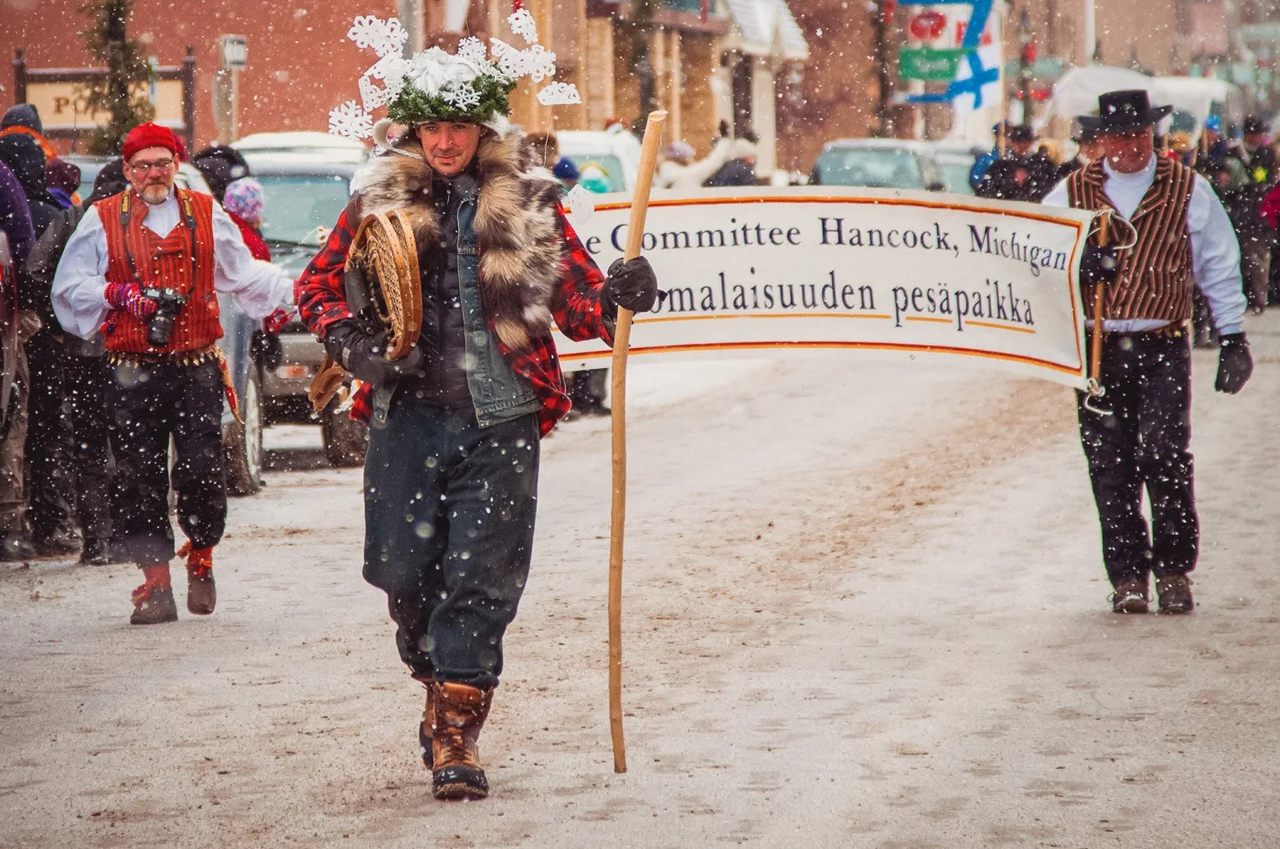



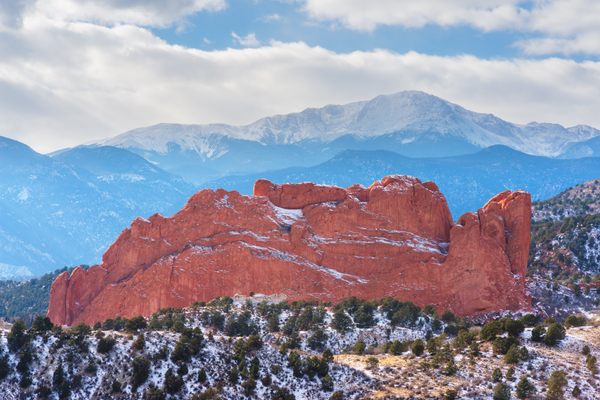
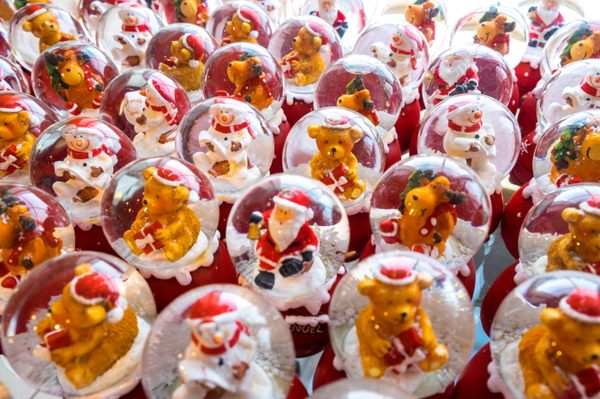




















Follow us on Twitter to get the latest on the world's hidden wonders.
Like us on Facebook to get the latest on the world's hidden wonders.
Follow us on Twitter Like us on Facebook